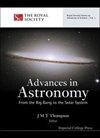基于数值模拟的大型射电望远镜场地防风林控制风流研究
IF 1.2
4区 物理与天体物理
Q3 ASTRONOMY & ASTROPHYSICS
引用次数: 1
摘要
射电望远镜指向精度越高,风扰动对天线性能的影响越明显。以110 m口径七台射电望远镜(QTT)场地为例,对场地地形和气流特征进行了研究。研究发现,入风频率高、风速相对较高的风向多位于天线外围的山隙处。如果在上游风口精确布置风阻设施,可以有效降低天线区域的风速。本研究提出了一种基于防风林精确布置的望远镜场地风向控制方法。利用多孔跃变理论,建立了防风栅栏的仿真模型。与风洞实测数据相比,模拟结果的平均误差小于14%,表明所构建的风挡模型具有较高的可靠性。建立了现场工况的计算域模型。考虑了防风栅布置的极端条件,仿真结果表明,通过对防风栅的控制,可以使天线区域内的风速降低30%以上。验证了场地防风栅栏控制风量方法的可行性,为后续研究防风栅栏的精确布置提供了参考。本文章由计算机程序翻译,如有差异,请以英文原文为准。
Research on Wind Flow Control by Windbreak Fence for a Large Radio Telescope Site Based on Numerical Simulations
The higher the pointing accuracy of the radio telescope, the more obvious the influence of wind disturbance on antenna performance. Taking the site of the 110 m aperture QiTai radio Telescope (QTT) as an example, the terrain and air flow characteristics of the site are studied. It is found that the wind direction with high incoming wind frequency and relatively high speed is mostly located in the mountain gap on the periphery of the antenna. If the wind resistance facilities are precisely arranged in the upstream tuyere, the wind speed in the antenna area can be effectively reduced. This study proposes a method to control the wind flow at a telescope site based on the precise arrangement of the windbreak fence. The windbreak fence simulation model is constructed using the theory of porous jump. The mean error of the simulation results is less than 14% compared to the wind tunnel measured data, indicating that the constructed windbreak fence model has high reliability. The computational domain model of the working conditions for the site is constructed. The extreme condition of the windbreak fence arrangement is considered, and the simulation results show that the wind speed in the antenna area can be reduced by more than 30% through the control of the windbreak fence. It verifies the feasibility of the method of controlling the wind flow by the windbreak fence for the site which provides a reference for the subsequent research on the precise arrangement of the windbreak fence.
求助全文
通过发布文献求助,成功后即可免费获取论文全文。
去求助
来源期刊

Advances in Astronomy
ASTRONOMY & ASTROPHYSICS-
CiteScore
2.70
自引率
7.10%
发文量
10
审稿时长
22 weeks
期刊介绍:
Advances in Astronomy publishes articles in all areas of astronomy, astrophysics, and cosmology. The journal accepts both observational and theoretical investigations into celestial objects and the wider universe, as well as the reports of new methods and instrumentation for their study.
 求助内容:
求助内容: 应助结果提醒方式:
应助结果提醒方式:


